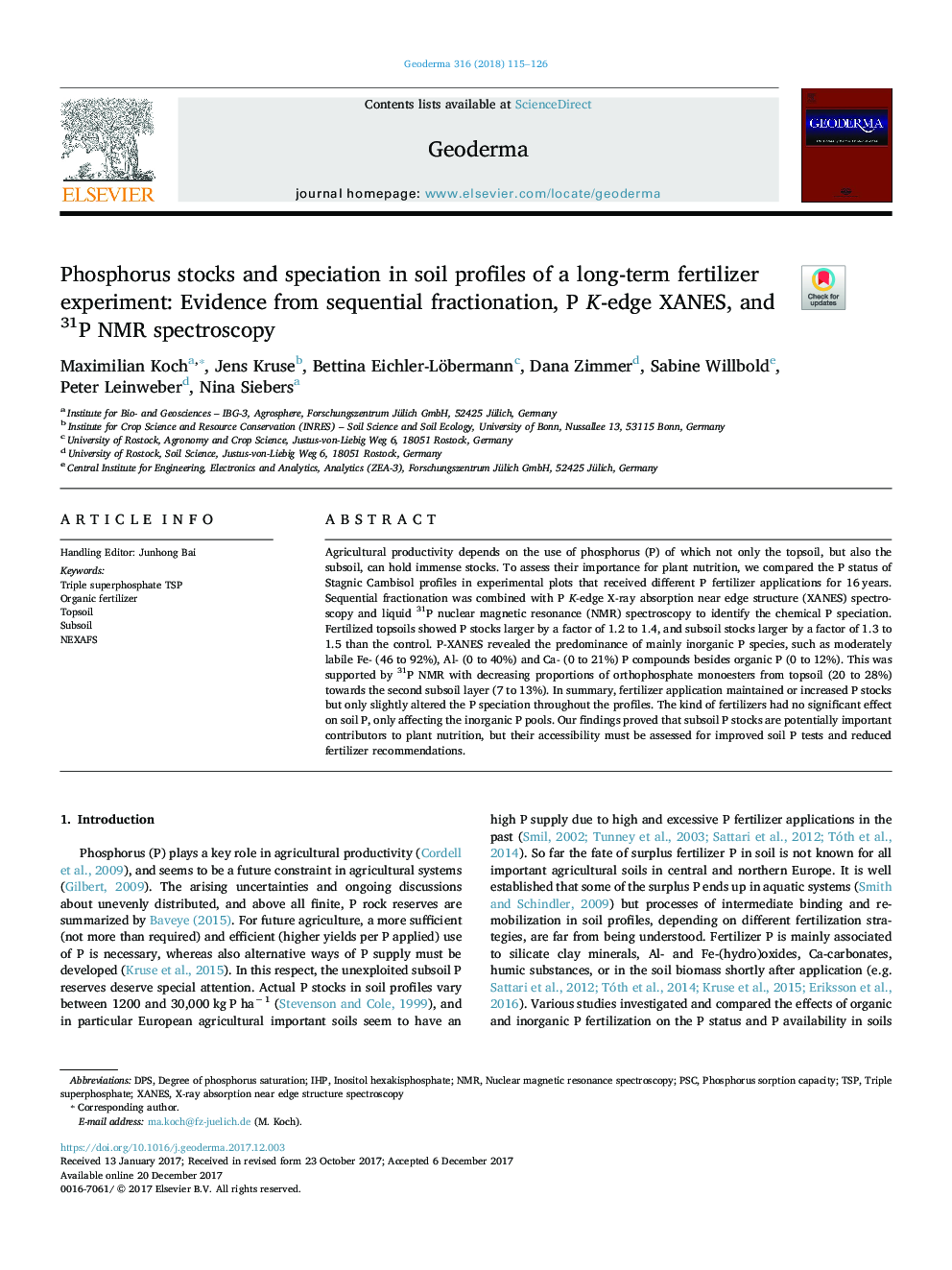| Article ID | Journal | Published Year | Pages | File Type |
|---|---|---|---|---|
| 8894234 | Geoderma | 2018 | 12 Pages |
Abstract
Agricultural productivity depends on the use of phosphorus (P) of which not only the topsoil, but also the subsoil, can hold immense stocks. To assess their importance for plant nutrition, we compared the P status of Stagnic Cambisol profiles in experimental plots that received different P fertilizer applications for 16Â years. Sequential fractionation was combined with P K-edge X-ray absorption near edge structure (XANES) spectroscopy and liquid 31P nuclear magnetic resonance (NMR) spectroscopy to identify the chemical P speciation. Fertilized topsoils showed P stocks larger by a factor of 1.2 to 1.4, and subsoil stocks larger by a factor of 1.3 to 1.5 than the control. P-XANES revealed the predominance of mainly inorganic P species, such as moderately labile Fe- (46 to 92%), Al- (0 to 40%) and Ca- (0 to 21%) P compounds besides organic P (0 to 12%). This was supported by 31P NMR with decreasing proportions of orthophosphate monoesters from topsoil (20 to 28%) towards the second subsoil layer (7 to 13%). In summary, fertilizer application maintained or increased P stocks but only slightly altered the P speciation throughout the profiles. The kind of fertilizers had no significant effect on soil P, only affecting the inorganic P pools. Our findings proved that subsoil P stocks are potentially important contributors to plant nutrition, but their accessibility must be assessed for improved soil P tests and reduced fertilizer recommendations.
Keywords
Related Topics
Physical Sciences and Engineering
Earth and Planetary Sciences
Earth-Surface Processes
Authors
Maximilian Koch, Jens Kruse, Bettina Eichler-Löbermann, Dana Zimmer, Sabine Willbold, Peter Leinweber, Nina Siebers,
